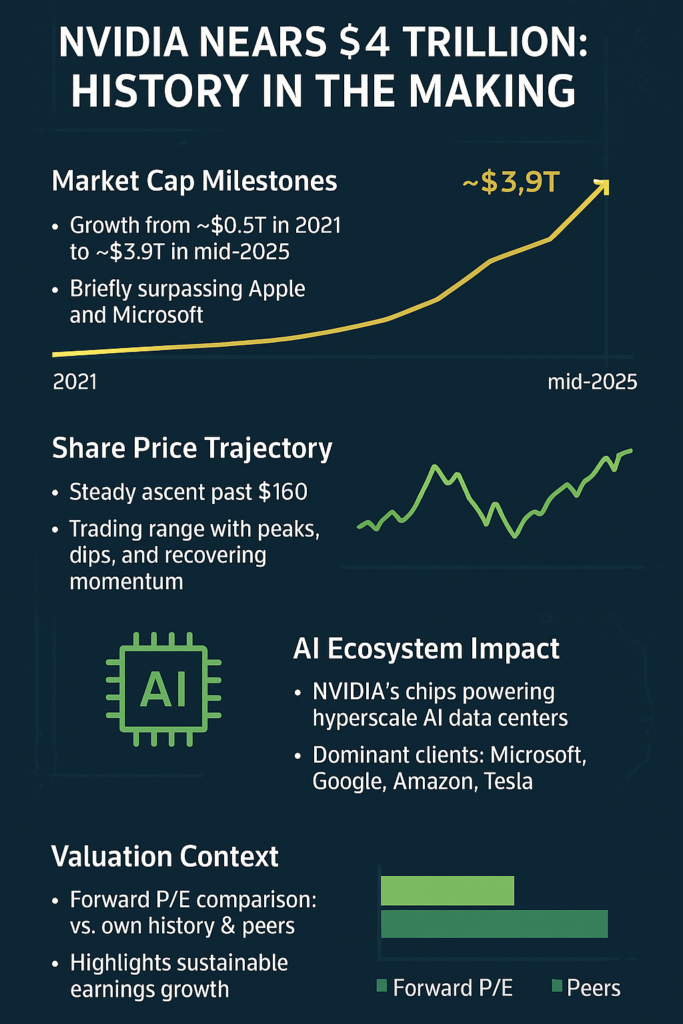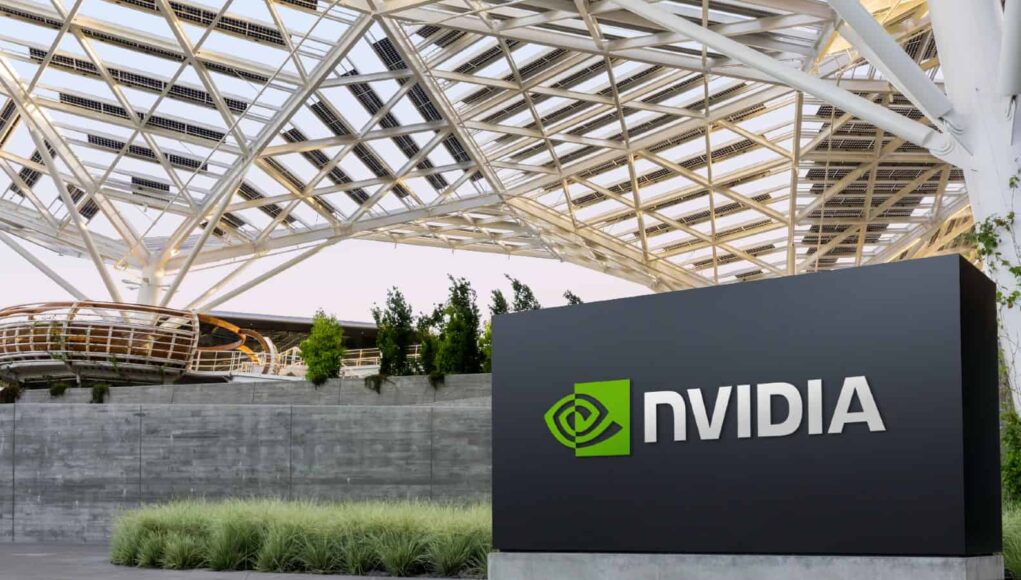In a stunning turn of events on July 3, 2025, Nvidia, the Santa Clara-based titan of chipmaking, briefly claimed the title of the world’s most valuable company in history, hitting a jaw-dropping market capitalization of $3.92 trillion.
For a fleeting moment, Nvidia eclipsed Apple’s record-setting valuation of $3.915 trillion, set just months earlier on December 26, 2024. This milestone wasn’t just a financial triumph—it was a testament to the unrelenting global hunger for artificial intelligence (AI) and Nvidia’s pivotal role in powering this technological revolution.
The AI Boom That Changed Everything
Picture this: a world where AI is no longer a sci-fi dream but the backbone of industries, from self-driving cars to intelligent chatbots and cutting-edge robotics.
At the heart of this transformation is Nvidia, a company once known primarily for its gaming graphics cards but now the undisputed leader in high-end AI chips.
On that fateful Thursday, Nvidia’s shares surged as much as 2.4% to $160.98 in morning trading, pushing its market cap past Apple’s historic peak. By the end of the day, the stock settled at a still-impressive $159.60, valuing Nvidia at $3.89 trillion—just shy of Apple’s record but enough to solidify its place among the giants.
What fueled this unprecedented rise? The answer lies in Wall Street’s unshakeable optimism about AI. Nvidia’s chips, designed to handle the immense computational demands of training large-scale AI models, have become the gold standard for tech giants and startups alike.
From OpenAI’s ChatGPT to autonomous vehicle systems and advanced robotics, Nvidia’s technology is the engine driving the AI revolution. The company’s latest chips have pushed the boundaries of what’s possible, enabling faster, more efficient training of AI models that are reshaping how we work, play, and innovate.

A Dance of Titans: Nvidia, Apple, and Microsoft
The race to be the world’s most valuable company has been nothing short of a corporate thriller. Nvidia, Apple, and Microsoft have been locked in a high-stakes game of musical chairs at the top of the market cap charts.
Just a month earlier, in June 2025, Nvidia reclaimed the top spot from Microsoft, whose market value stood at $3.7 trillion after a 1.4% share increase to $498. Apple, with a market cap of $3.19 trillion, held the third position, its shares up 0.5%.
This constant shuffling reflects the intense competition among tech giants, each vying to define the future of technology.
Nvidia’s journey to this point has been nothing short of extraordinary. Since 2021, the company’s market value has skyrocketed by more than eight times, a growth trajectory that analysts attribute to the explosive demand for AI infrastructure.
Wall Street analysts are buzzing with excitement, with some predicting Nvidia’s stock could climb as high as $250 per share. This optimism isn’t just blind hype—it’s backed by Nvidia’s ability to deliver cutting-edge technology that powers everything from search engines to productivity software and autonomous systems.
The Visionary Behind the Throne: Jensen Huang
At the helm of Nvidia’s ascent is CEO Jensen Huang, a charismatic leader who has become a rockstar in the tech world. Huang’s vision for Nvidia extends far beyond chips.
At CES 2025, he unveiled the company’s ambitious plans to bring AI-powered technology to consumer PCs, laptops, and even robotics. Nvidia’s Cosmos foundation models, which generate photorealistic video for training robots and self-driving cars, promise to revolutionize industries by reducing the cost of data collection.
Huang’s bold claim that Cosmos could do for robotics what Meta’s Llama 3 did for enterprise AI underscores Nvidia’s relentless drive to innovate.
Huang’s global influence was on full display during his visit to Taipei for Computex 2025, where he was celebrated as a local hero. Born in Taiwan’s historic capital of Tainan, Huang has become a symbol of pride for the Taiwanese tech industry.
From sharing guava with MediaTek’s CEO to collaborating with Foxconn’s chairman, Huang’s presence underscored Nvidia’s deep ties to the global tech ecosystem. His message was clear: Nvidia isn’t just building chips; it’s building the infrastructure for a world powered by AI.
Challenges on the Horizon
Despite its meteoric rise, Nvidia’s path isn’t without obstacles. U.S. export restrictions have impacted its market share in China, forcing the company to develop alternative chips compliant with regulations.
Some analysts, like Bank of America’s Vivek Arya, caution that Nvidia’s robotics push may remain a “cool but niche” opportunity unless the technology becomes more affordable and widespread.
Yet, Nvidia’s strategic moves, such as the NVLink Fusion platform, which allows companies to integrate custom chips into Nvidia’s AI infrastructure, signal its commitment to staying ahead of the curve.
What’s Next for Nvidia and the AI Revolution?
Nvidia’s brief reign as the world’s most valuable company is more than a financial milestone—it’s a glimpse into the future. As AI continues to permeate every facet of society, from healthcare to entertainment, Nvidia’s chips will remain at the forefront.
The company’s ability to innovate, adapt, and inspire confidence among investors positions it as a powerhouse for years to come. But in the fast-paced world of tech, the race for supremacy never slows down. Will Nvidia hold its crown, or will Apple or Microsoft stage a comeback? Only time will tell.
For now, Nvidia’s story is one of ambition, innovation, and the relentless pursuit of progress. As the world doubles down on AI, Nvidia stands tall as the architect of a new era—one where the possibilities are as limitless as the technology it creates.










